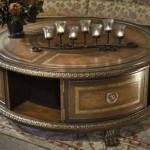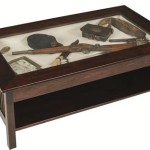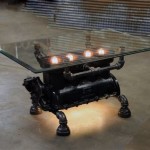How to Find the Center of a Circle Table
Finding the center of a circular table can be a useful skill for various purposes, from determining the perfect spot for the centerpiece to ensuring a balanced arrangement of chairs. While the exact method may vary slightly depending on the table's material and accessibility, the underlying principles remain the same. This article outlines several time-tested techniques for accurately locating the center of your circular table.
1. Using a Ruler and a Pencil
One of the simplest methods for finding the center of a circle involves the use of a ruler and a pencil. Here's how to implement this technique:
- Draw a chord: Using your ruler, draw a straight line across the table's circular surface. This line represents a chord, which is any line segment that connects two points on the circle's circumference.
- Draw a second chord: Draw another chord that intersects the first chord at its midpoint. Ensure that this second chord is approximately perpendicular to the first chord.
- Bisect the chords: Draw perpendicular bisectors for both chords. The perpendicular bisector of a line segment is a line that intersects the segment at its midpoint and forms a 90-degree angle with it.
- Mark the intersection: The point where the perpendicular bisectors intersect is the center of the circle. Mark this point using your pencil.
This method works because the perpendicular bisectors of any two chords in a circle always intersect at the circle's center. The technique's accuracy relies on the precise measurement of the chords and the construction of their bisectors.
2. Using a Compass and a Pencil
Another effective method for finding the center of a circle utilizes a compass and a pencil. This approach leverages basic geometric principles and is often preferred for its accuracy:
- Draw an arc: Place the compass's needle on any point on the circle's circumference. Adjust the compass's width to a distance that is greater than half the diameter of the circle. Draw an arc that intersects the circle at two points.
- Draw another arc: Without changing the compass's width, move the needle to one of the intersection points where the first arc crossed the circle. Draw another arc that intersects the circle at two points.
- Draw a third arc: Move the compass's needle to the other intersection point from the previous step. Draw a third arc that intersects the circle at two points.
- Mark the intersection: The point where the three arcs intersect is the center of the circle. Mark this point using your pencil.
This method works based on the principle that the intersection of three arcs drawn with the same radius from three different points on a circle's circumference will always be at the circle's center. This method is particularly helpful when dealing with larger circles where drawing chords may be challenging.
3. Using a String and a Pencil
For larger circles, especially those with limited access to the interior, employing a string and a pencil offers a practical solution. Here's how this technique works:
- Secure the string: Tie one end of the string to a pencil. The string's length should be greater than the diameter of the circle.
- Mark the circumference: Hold the string taut against the circle's circumference and mark a point on the table's surface using the pencil.
- Repeat the process: Move the pencil along the circumference, keeping the string taut, and mark another point on the table's surface. Continue this process, marking points around the circle's circumference.
- Draw a line: Choose two of the marked points that are opposite each other on the circle's circumference. Draw a straight line connecting these points. This line represents a diameter of the circle.
- Repeat the process: Repeat steps 3 and 4 with two other marked points on the circle's circumference. Draw a second diameter line.
- Mark the intersection: The point where the two diameter lines intersect is the center of the circle. Mark this point using your pencil.
This method relies on the fact that the diameters of a circle always pass through its center. By drawing two diameters, their intersection point naturally reveals the circle's center. This method is particularly useful when the table's surface is textured or uneven, making it difficult to draw precise lines directly on the surface.
In addition to the techniques described above, there are other tools and methods available for finding the center of a circle table. These include specialized tools like circle-finding gauges and digital measuring devices. The chosen method should align with the table's size, accessibility, and the desired level of accuracy. Understanding the principles behind these methods enables a more confident and efficient approach to finding the center of any circular table.

How To Find The Center Of A Circle

The Quick And Easy Way To Find Center Of A Circle

How I Find The Center Of A Large Circular Board

Tip To Find True Diameter Centre Off Round Table

How To Determine The Center Of A Circle

How To Find The Center Of A Wood Round Mother Daughter Projects

How To Find The Center Of A Wood Round Mother Daughter Projects

Quick Tip To Find The Center Of A Circle With Square

How To Find The Center Of A Wood Round Mother Daughter Projects

How To Find The Center Of A Wood Round Mother Daughter Projects
Related Posts








